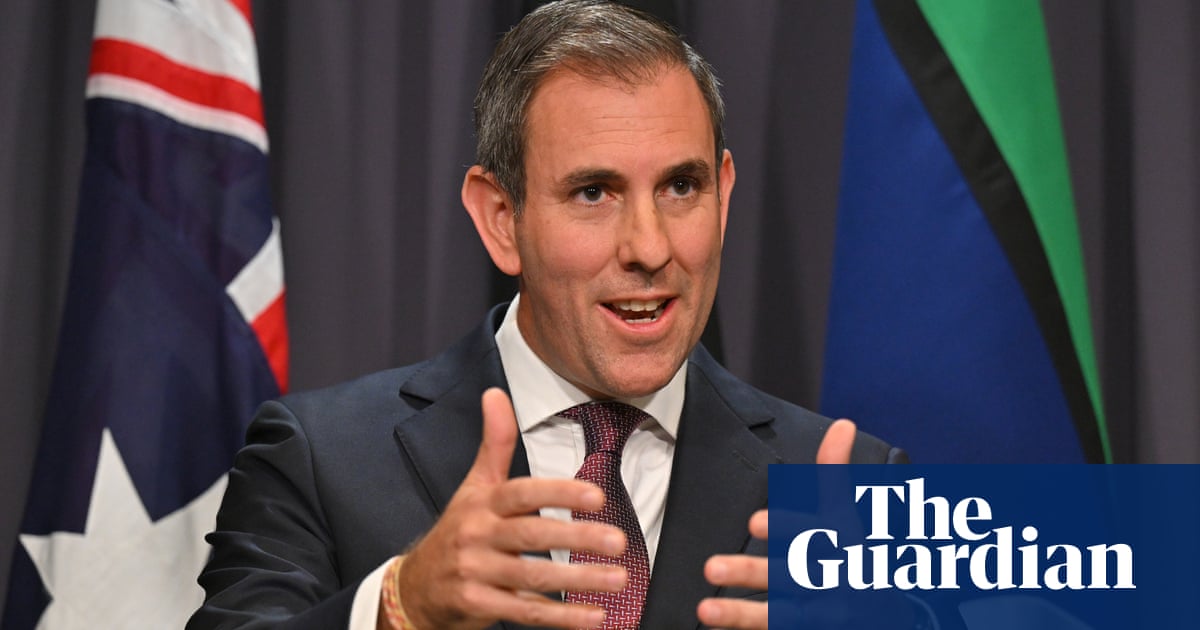
The five fastest growing areas of federal spending – health, aged care, NDIS, defence and interest payments – will grow to half of the budget by 2062-63, according to the intergenerational report.
The report, to be released in full by the treasurer, Jim Chalmers, on Thursday, finds those areas will grow from one-third of commonwealth government spending and increase by a total of 5.6% of gross domestic product over four decades.
Interest payments on debt alone will rise from 0.7% of GDP in 2022-23 to 1.4% of GDP by 2063-64.
In May Chalmers projected the federal budget was on track for its first surplus in 15 years, later revised to $19bn for the 2022-23 financial year.
Despite political pressure to announce more cost-of-living relief, the Albanese government is keen to bank as much of the surplus as possible.
In May the Treasury projected the 2023-24 budget would return to deficit, but Labor could deliver another surplus off the back of strong commodity prices and low unemployment.
The intergenerational report, excerpts of which were released on Saturday evening, said that the “National Disability Insurance Scheme and interest on government debt are the fastest growing categories over the next decade, with health and aged care growing most quickly at the end of the projection period as the population ages”.
The national cabinet has agreed to trim growth in NDIS spending from 14% to 8% a year, a measure estimated to save $15bn over four years.
The report explained that “demographic ageing alone is estimated to account for around 40% of the increase in government spending over the next 40 years”.
“Ageing and a growing population are driving strong growth in health and aged care spending. Other factors, such as new technologies, treatments, and other improvements in care quality, are also projected to drive government spending growth.”
Income support payments and education “are expected to grow in real per capita terms, but decline as a share of GDP as the population ages”, the report said.
Chalmers said: “We’re getting the budget in much better nick, but what the intergenerational report reveals is, after this year, the pressure on the budget intensifies.
“Our responsible fiscal management is helping to repair the budget and secure essential services into the future, which is why we are taking measured actions to strengthen the structural budget position over time.”
Chalmers said the Albanese government had achieved “the biggest budget turnaround in Australian history” including the first budget surplus in 15 years.
The finance minister, Katy Gallagher, said “from the moment we came into government we have been focused on managing the budget in a responsible way”.
“That’s in stark contrast to our predecessors, who left us with a trillion dollars in debt and nothing to show for it.”
Labor had achieved a surplus even “while delivering targeted cost-of-living relief to Australians who are doing it tough”.
“The [intergenerational report] shows that the hard work must continue to keep the budget on a sustainable footing, while ensuring we deliver the services that Australians rely on every day.”
The Albanese government’s aged care taskforce is considering options including seeking a bigger contribution from residents to pay for aged care.
The opposition, under Peter Dutton, has offered Labor bipartisan support to make cuts to make the NDIS and aged care more sustainable.
https://news.google.com/rss/articles/CBMilQFodHRwczovL3d3dy50aGVndWFyZGlhbi5jb20vYnVzaW5lc3MvMjAyMy9hdWcvMjAvaW50ZXJnZW5lcmF0aW9uYWwtcmVwb3J0LXJldmVhbHMtc3BlbmRpbmctaW4ta2V5LWFyZWFzLXRvLWJsb3ctb3V0LXRvLWhhbGYtYXVzdHJhbGlhbi1idWRnZXQtYnktMjA2M9IBlQFodHRwczovL2FtcC50aGVndWFyZGlhbi5jb20vYnVzaW5lc3MvMjAyMy9hdWcvMjAvaW50ZXJnZW5lcmF0aW9uYWwtcmVwb3J0LXJldmVhbHMtc3BlbmRpbmctaW4ta2V5LWFyZWFzLXRvLWJsb3ctb3V0LXRvLWhhbGYtYXVzdHJhbGlhbi1idWRnZXQtYnktMjA2Mw?oc=5
2023-08-19 20:34:00Z
2346266489
Bagikan Berita Ini














0 Response to "Intergenerational report reveals spending in key areas to blow out to half Australian budget by 2063 - The Guardian"
Post a Comment